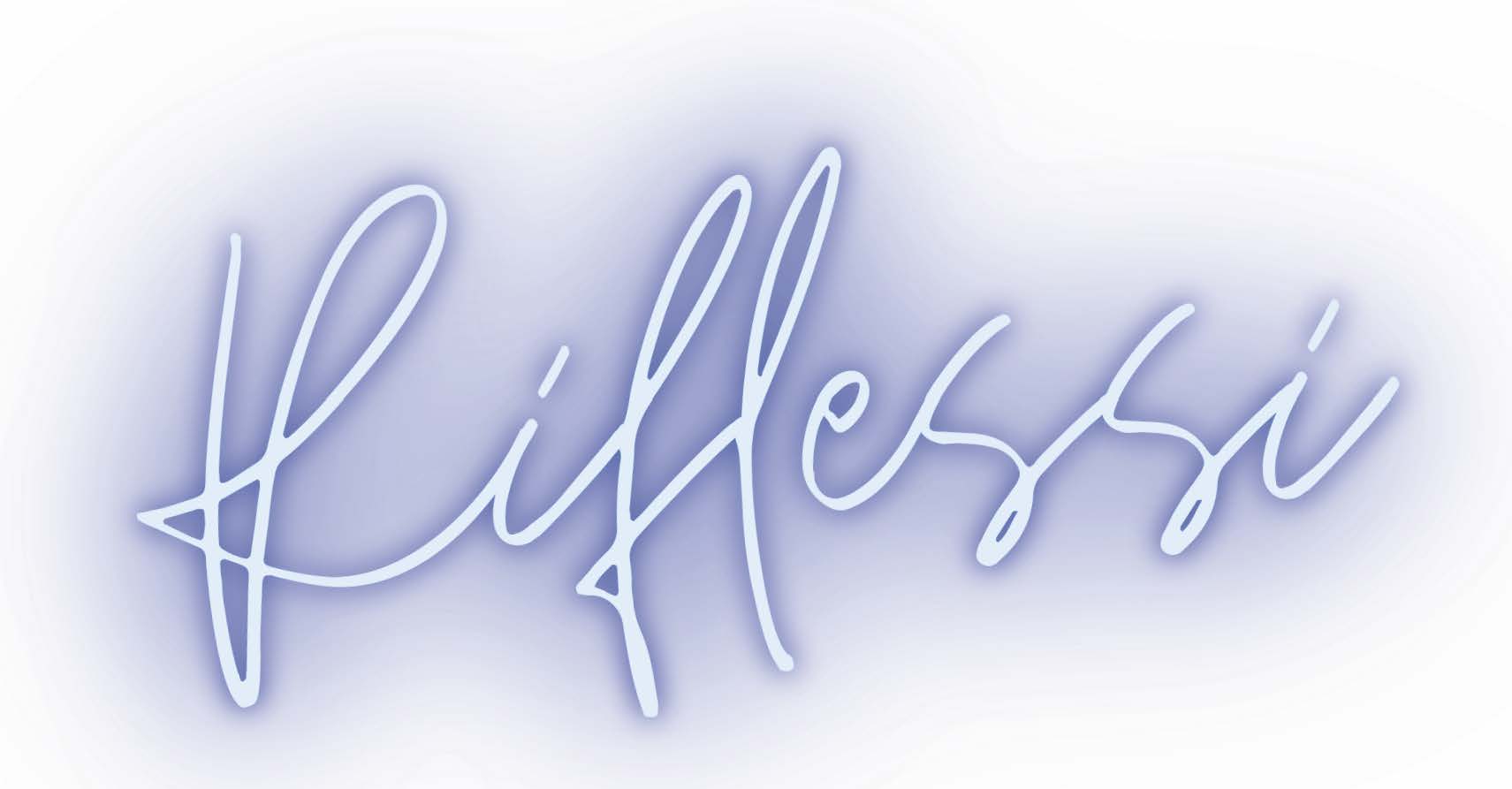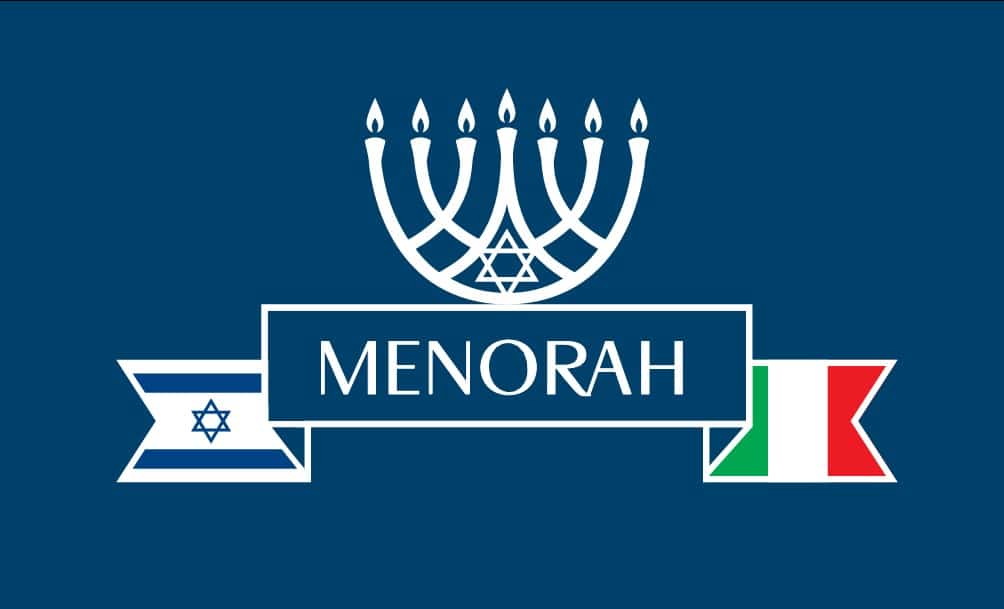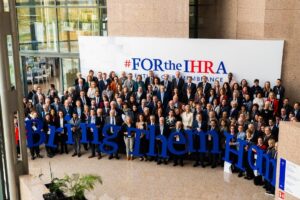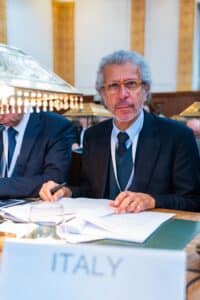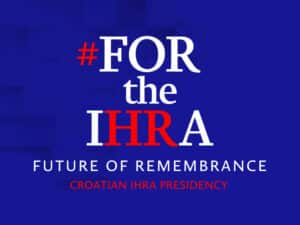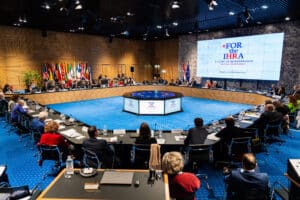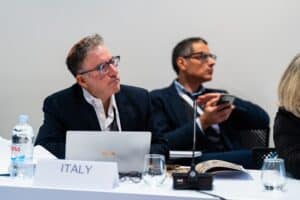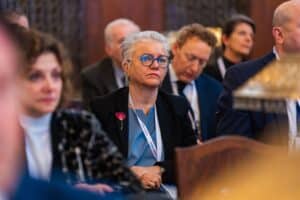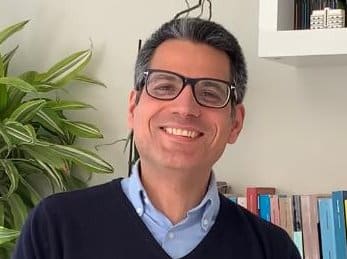IHRA plenary: rethinking the preservation of Memory
The Croatian chairmanship of the work of the IHRA concluded in Zagreb. We spoke about it with one of the chairs, Simonetta Della Seta
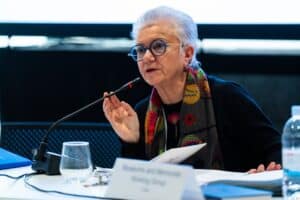
Simonetta, last week the International Holocaust Remembrance Alliance (IHRA) plenary meeting took place in Zagreb, with you chairing the Working Group dedicated to Holocaust museums and memorials. Now almost at the end of your term, is it possible to begin to take stock of your presidency?
The position of Chair of the Museums and Memorials Working Group (MMWG) runs from March 2023 to March 2024. In fact, however, going into a troika job, you start a year earlier and finish a year later. In short, it is three years of work for the largest IHRA group (there are more than 100 memorial and museum directors). It is a very demanding job, which I am trying to do by making as concrete a contribution as possible. By now, Holocaust museums and memorials are spread all over the world; this means being in direct contact with a great many institutions, and therefore, with their advice deciding what lines of action to propose to the IHRA, trying to find the right mediation between the needs of small and large museums, as well as older ones and new ones. At this time alone, 30 new memorials and/or museums are under construction: from the one in London next to the parliament, to the Swiss one in Bern, to the museum on the Warsaw ghetto, which was also presented in Rome during the launch event of the network of Italian Shoah museums. Together, we continued to work on issues identified before my arrival, such as combating Shoah distortion and safeguarding endangered sites. The preparation of the agenda for the Zagreb plenary was done very collegially, so that each person could elaborate, on each point, even critical comments, which were very essential. During the Croatian chairmanship we also sent recommendations to the (Croatian) government to improve the Ustasha extermination camp in Jasenovac, where we were able to achieve important narrative and explanatory changes. In fact, the camp had been preserved under communism and was highly problematic.
Can you tell us more about it?
It is a controversial camp, reconstructed during the period when the former Yugoslavia was precisely under communist rule, the scene of episodes that tell us about the very strong tensions experienced in the region, for example between Croats and Serbs and then expanded by the 1991 war. A visit to the camp by a group of IHRA experts, of which I was a member, last June allowed us to make a number of recommendations, for example concerning the definition of victims and perpetrators.
Were there any new developments on the agenda as well?
In fact, I also introduced new issues, such as the debate, initiated just in Zagreb, on the use of contemporary art in museums dedicated to the Shoah. Indeed, it turned out that not a few museums now rely on contemporary art to garner the attention of younger audiences and arouse in them feelings related to the themes. We illustrated some successful cases-including Yad Vashem in Jerusalem-and proposed working on a framework for other museums that intend to make use of art even on such a difficult topic. How to bring artists closer to the topic? How to offer the right context anyway? But the real news was the wide-ranging and painful debate held on October 7 and its aftermath. An Alliance that deals with the Shoah, that is, the most tragic expression of anti-Semitism in the modern world, cannot help but question what is happening and the exponential growth of anti-Semitic incidents around the world. I would say that this issue has held sway among experts and diplomats alike.
Indeed, in opening your working session, you pointed out that the atrocities committed by Hamas on October 7 while they cannot be compared to the Holocaust pose issues that are of interest to the IHRA.
Actually, my remarks started with what Dani Dayan, director of Yad Va Shem, and Deborah Lipstadt, President Biden’s special envoy on issues of anti-Semitism, said. The former, who then spoke in the general plenary Thursday, explained to us that the barbarities committed against Jews by Hamas on Oct. 7 are not quite comparable to the Holocaust, but that by their methodology and gravity they call the world to concrete action against evil. Instead, Lipstadt pointed out how in just a few weeks the world has tried to “rewrite history,” a form of total distortion about what Hamas committed on Oct. 7. What I focused on, however, were mainly the repercussions after October 7 for museums: often vandalized with anti-Semitic writing and otherwise suffering from a very sharp drop in visitors. Where did we go wrong? What have we not done correctly in all these years of education about the Shoah? These are inevitable questions.
Have answers, albeit partial, emerged?
This is an issue that will have to be worked out in the near future. Hot on the heels of that, I would say that perhaps the Shoah should have been told not in such an isolated way, as was done, that is, by contextualizing it only within that historical period. Perhaps we should have told it in a broader context, such as focusing on the life the history and culture of Jews, and their connection to the Land of Israel.
This is a theme that, more generally, involves the need to rethink the day of January 27.
After October 7, we all believe that the work of those who should educate about the history of the Shoah needs to be rethought. It is no longer possible to tell only the anti-Semitism of the past, what happened in the 1900s. Now it is still early, perhaps, to be able to give answers. However, there is one fact that everyone has pointed out in this plenary meeting that is extremely worrying: the very sharp increase in the incidents of anti-Semitism, which in some cases have reached peaks of 400%, even 800%. In Italy, Gadi Luzzatto Voghera, director of CDEC, told us that there has been a 200% increase in acts of anti-Semitism, more offline than online. Finally, we must not underestimate that this new anti-Jewish wave has peaks even in places far away from where the Shoah took place, such as Canada, Australia, and Latin America.
From this plenary meeting is it possible to glimpse what the future of Holocaust remembrance and the fight against anti-Semitism in Europe will be?
Inside the IHRA are 35 countries, not only from Europe, such as the United States, Canada, Australia, the Latin American countries, and of course Israel. So the IHRA has a global view of the distortion of the Shoah and the fight against anti-Semitism. Certainly a European perspective also emerged during the work. European Union anti-Semitism coordinator Katharina Von Schnurbein, who attended Thursday’s plenary session as an observer, said she was very concerned about the current situation. One theme that emerged then is that it will be the task in the near future of all national anti-Semitism coordinators to address this extraordinary moment we are living through, as much as possible in conjunction with the IHRA community of experts.
Finally, to return to your role: can you give us a better understanding of what being Chair of a working group like yours consists of?
This is a task that requires quite constant work and institutional responsibility, as the IHRA is an alliance of 35 governments. It is crucial to combine the directions of the governments with the local directions of the museums, scattered all over the world, to understand their needs, to prepare meetings in a constructive way, making the experts reason and then bring instances and recommendations to the diplomats (heads of delegations) and through them to the governments themselves. All this while staying in touch with the permanent structure of IHRA, i.e., the Permanent Office which is located in Berlin and which helps us frame the work in specific regulations, as well as with the country holding the presidency, which in 2023 was precisely Croatia.
